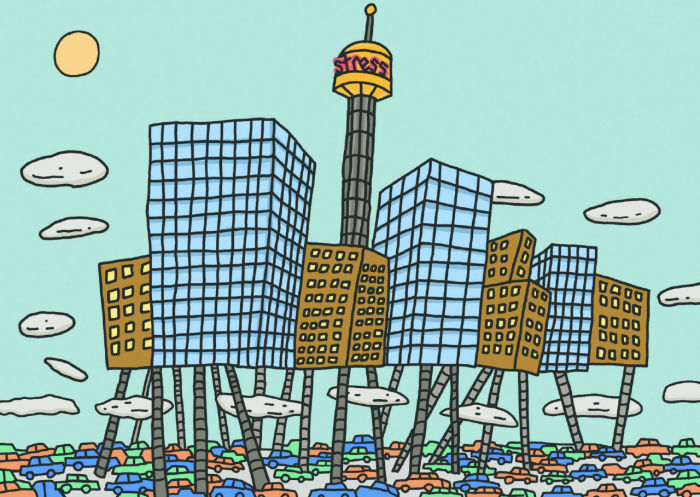Cities all around the world are moving away from freeways and tollways. They have discovered that roads do not work. Building more roads does not reduce conjestion.

If it seems obvious to you that building more lanes would fix Sydney’s congestion, that every car could then have enough space, and that traffic would then flow nicely, then read on.
As a thought experiment, imagine if we could give all the land in inner city Sydney over to cars. Put all the buildings on stilts. Get rid of the bus lanes and the footpaths, the train lines and the light rail and everything else. Put everyone in cars, and pave over everything. Turn every square metre into road.
Would that cure congestion?
The City of Sydney covers 25 square kilometres. The average road lane is a bit over 3 metres wide, so 25 square kilometres is enough for close to 8,333 kilometres of road.
Around 610,000 people a day commute to Sydney, which also has approximately 205,339 residents, according to the City of Sydney. If we put them all into cars, we would have 815,339 imaginary cars sharing our giant imaginary inner city road.
That means every car gets about 10m of road. The average car is a bit under 5 metres long, so every one of these 815,339 cars is about 1 car length away from the car in front of it, and about 1 car length away from the car behind it.
Packed that tightly, cars move slowly. Traffic would crawl. Drivers would be lucky to manage 10km/hr.
By 2031, the population of Sydney is forecast to grow by 30 per cent, leaving 30 per-cent less space per car. There would be about two metres between cars. Traffic would be gridlocked. There would be 25 square kilometres of gridlock.
Even if you used every square metre of Sydney for cars, with no buildings or anything else, that would still not be enough to move 815,339 people. One or two or five more lanes are a drop in the proverbial ocean. The Chinese have built roads that are 50 lanes wide, and they still clog up.
For moving large numbers of people, roads are not the answer.




